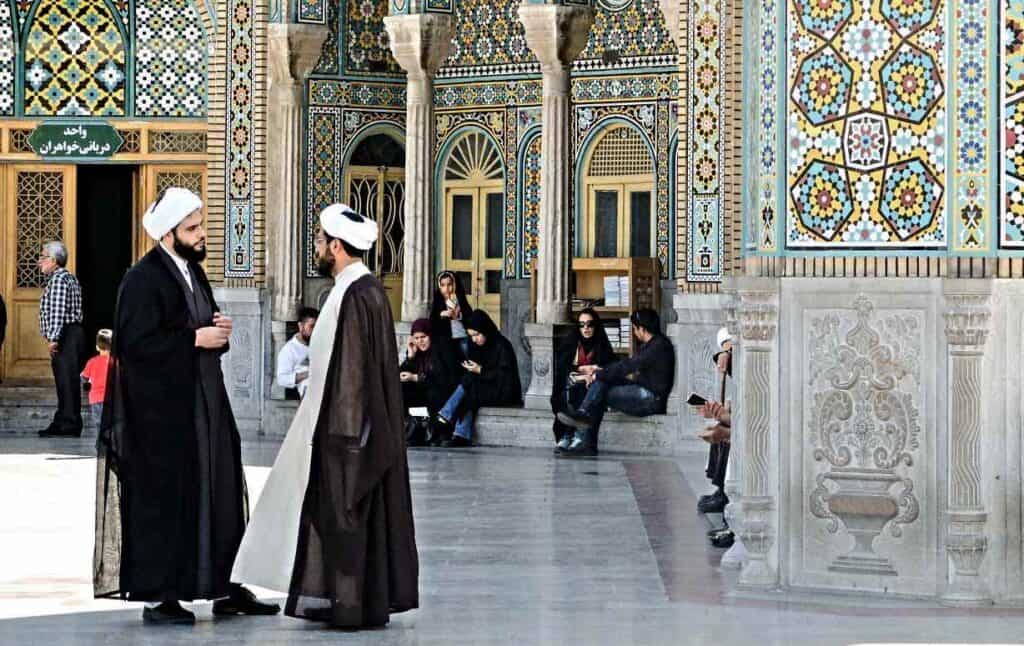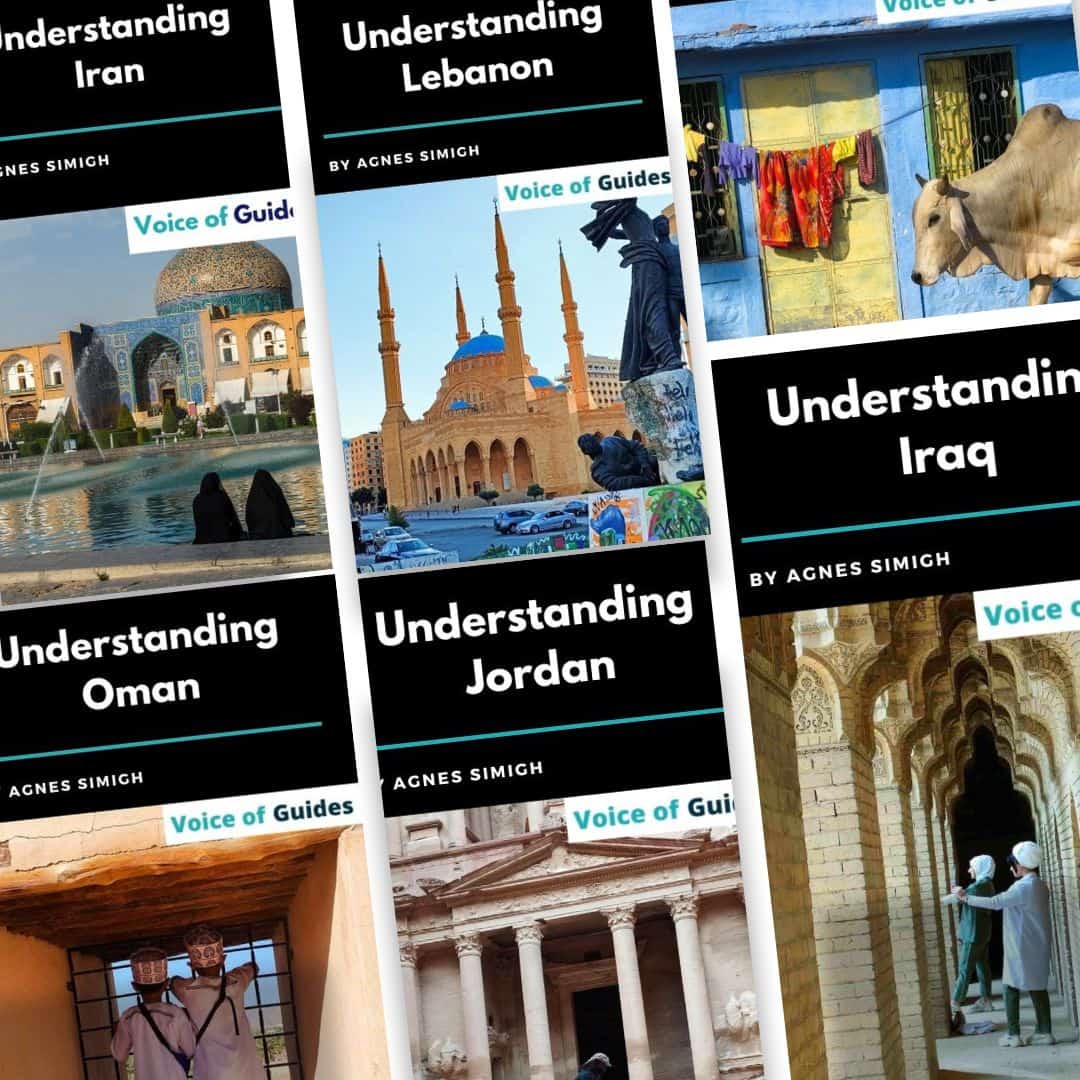This article may contain affiliate / compensated links. For full information, please see our disclaimer here.
Clergymen stroll in an “aba” (loose cloak) while most women cover their bodies from head to toe in a black chador. Qom is the second holiest city after Mashhad and is said to be the most conservative in Iran. That is the main reason why many tourists avoid making a stop here. But I think you should visit it because it reveals another face of Iran that is equally part of its image. And if you are like me, then you come not only to see the “popular attractions” but also to look behind the scenes. Here you find a complete guide about the best places to visit in Qom based on the suggestion of tour guides.
- How far is Qom from Tehran and how to get there?
- The significance of Qom in Iran
- The best things to do and places to visit in Qom
- 1. The holy shrine of Fatimah Masoumeh – the most important place to visit in Qom
- 2. The green tomb garden-a less known place to visit in Qom
- 3. Jameh mosque in Qom
- 4. The Qom bazaar – one of the most traditional commercial centers in Iran
- 5. The house of Khomeini
- 6. Go to have dinner in the historic Yazdanpanah House
- 7. Jamkaran mosque
- 8. Mount Khezr-e-Nabi
- 9. Namak Lake (Salt Lake)
- What to taste in Qom
- Recommended hotels in Qom (by locals)
- Recommended Restaurants in Qom (by locals)
How far is Qom from Tehran and how to get there?
Qom is 150 km and a 2 hours’ drive from Tehran. You can also reach Qom by bus or train.
Tehran has four main bus stations from where you can head to many cities in any direction.
The West Bus Terminal: mainly serves the cities in the North, West, and Southwest.
The East Bus Terminal: mainly serves the cities in the North, Northeast, and East.
The South Bus Terminal: mainly serves the cities in the south.
Beyhaghi Bus Terminal: serves cities in Northeastern, Western and Central Iran, sometimes in the south.
Most buses to Qom depart from the South Bus Terminal (2 hours 15 minutes). You can buy your ticket online: https://iran.1stquest.com/bus
If you want to go directly from the Tehran airport (IKA) to Qom you either take a taxi (one hour’s drive) or you take the metro to the South Bus Station of Tehran from where buses depart regularly
There is also a train connection from Tehran to Qom (2 hours). You can buy your train ticket here: https://iranrail.net/
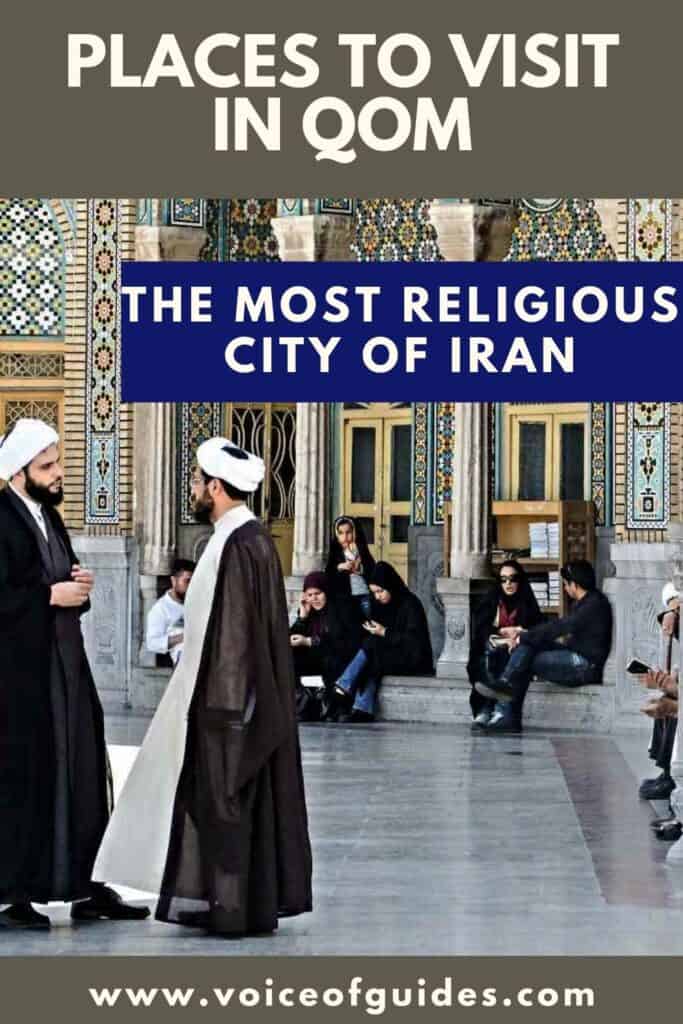
The significance of Qom in Iran
1. Qom-one of the principal pilgrimage sites in Iran
The holy shrine of Fatimah Masoumeh attracts millions of Shiite travelers from Afghanistan, Iraq, Bahrain, India, and some African countries.
Some call it the religious capital and the most conservative city in Iran. Traditional clerics even oppose having shopping malls in the city, stating it is the symbol of the Western world. Hence they set up the malls outside the city boundaries.
Thanks to its religious significance Qom receives a fair share of tax revenues and donations from the devotees. It enabled immense changes, and several overpasses and modern high-rise buildings appeared. However, the immediate neighborhood of Feyziyeh still preserves its ancient role and is considered as the „heart of Shiism”.
„Did you go to Qom?” – asked an Iranian girl I met during my trip through Iran.
„Yes. It is one of the holiest cities in Iran. I wanted to see that. Why?” – I asked back.
„That is why we have never been there. Most of us Iranians are not so religious, and we do not have sympathy with the fundamentalists who try to impose that on us. So, we prefer not to go there.”
2. Qom-the birthplace of the Islamic revolution
The events of 1979 dethroned Mohammad Reza Pahlavi, „the Shah” and gave birth to the Islamic Republic of Iran.
Khomeini ayatollah, the leader of the Islamic revolution, studied and then lived in Qom from 1945 to 1964.
He became a clergyman and ascended to the highest rank of Shiite clergy afterward, the ayatollah. Although observing the “Westernization” of his country with suspicion, he kept his distance from politics in the beginning. But then he rebelled against the land reforms of the Shah that deprived the mullahs of their properties in 1962.
In response, the Shah sent military troops to Qom. During the retaliation, two theology students were killed and many others imprisoned. After that, Khomeini openly started to stir up the crowd against the Shah and continued to organize the revolution in his exile in Iraq. He returned on 1st February 1979, celebrated like a hero, and decided to stay in Qom instead of Tehran.
3. Qom-the most important center for Shiite religious studies and research
After the Islamic Revolution of 1979, the number of clergies doubled, and the population tripled in Qom. Today it is the 7th biggest city with more than a million inhabitants.
Qom is home to 50 religious schools, 200 research institutes and libraries. Some of the most prominent religious movements and progressive decrees (Fatwa) in Shia Islam originated in Qom.
Feyziyeh, located in the vicinity of the shrine of Fatimah Masoumeh, is the best university in the Shiite world. The school has been listed as a national monument in 2008. All the key figures of the Islamic Republic got an education in Qom, many of them in Feyziyeh. Theology studies usually take ten years, where they learn Islamic jurisprudence, philosophy, rhetoric, etc.
The best things to do and places to visit in Qom
1. The holy shrine of Fatimah Masoumeh – the most important place to visit in Qom
The most important monument that makes it the religious capital of Iran lies in the heart of Qom. Fatimah was the sister of Imam Reza, the 8th Shiite Imam. Shia Muslims believe that Prophet Mohammad had twelve divine successors. They venerate the 12 Imams and their immediate family members. All over Iran, these shrines (Imamzadeh) are major pilgrimage sites.
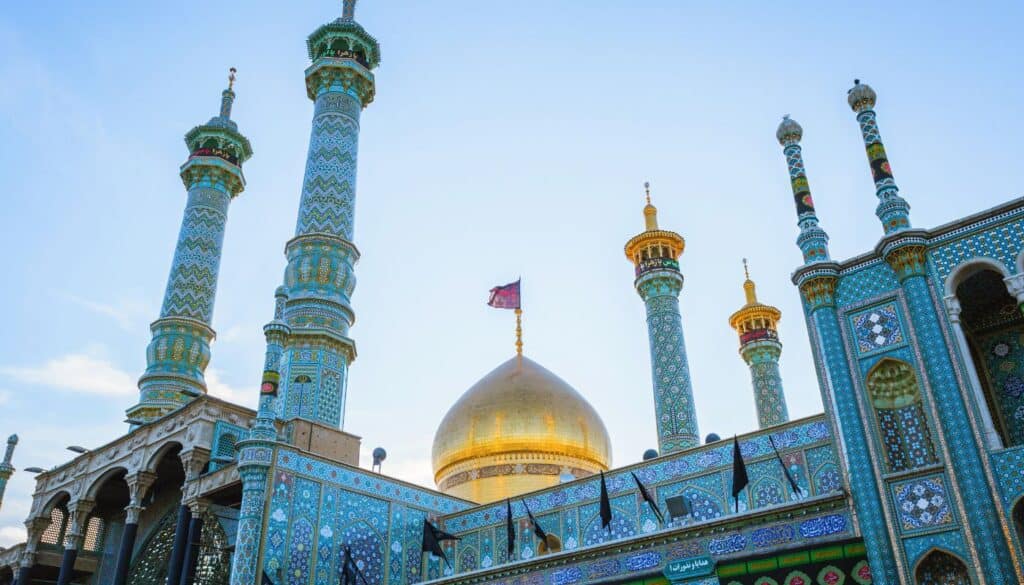
Shias also believe that the last Imam is still alive and that he will reappear as the “Mahdi” (Savior) one day. In the Shiite branch of Islam, the female family members are also highly respected.
Indeed, the shrines (Imamzadeh) can be more impressive and relevant than a mosque. People attribute power to them. They expect their wishes to be fulfilled, get a blessing, and sometimes miracles happen. Several clerics, scholars, and monarchs have also been buried within the shrine.
The golden dome of the shrine catches the eye from far, whereas the green and blue tiles and mirrored decoration of the interior is jaw-dropping.
The place is always crowded. Shiite pilgrims come to the shrine from the South of Iraq and Central Asia to get the blessing of Fatimah. Merchants benefit pretty well from its reputation. There are tons of shops in the streets around the sacred monument selling religious souvenirs and literature.
The architecture of Fatimah Masoumeh is so unique that they used some of its elements for the tomb of Ayatollah Khomeini near Tehran. The golden dome has a striking similarity.
2. The green tomb garden–a less known place to visit in Qom
The garden in the eastern part of Qom has three tower-like tombs dating back to the 13th – 14th century. Locals believe they belong to famous Arab commanders from the House of Safi who were independent rulers of Qom at that time. Two of them have turquoise-colored conical, and one has a rounded dome.
3. Jameh mosque in Qom
No iron was used to construct the Jameh mosque. Located on Azar Street near The Gate of Ray its enormous dome catches the eye from a great distance.
4. The Qom bazaar – one of the most traditional commercial centers in Iran
The famous Qom bazaar is located near the holy shrine. Qom has a desert climate. Summers are hot, while the temperature drops in winters. To withstand the extreme weather, they used clay, bricks and stones for the construction. The oldest part dates back to the Safavid period, i.e. to 400 years ago. But some modern parts were added during the Pahlavi Shah reign as well. This is a perfect place to taste some of the specialties of Qom and to check one of the famous products of the city.
Qom is well-known for the best handmade silk carpets in the world. No surprise that they are the most expensive too. But it is a real investment that continuously gains in value no matter how much it was used. The Qom carpet is made of pure silk produced in almost 100 different colors.
5. The house of Khomeini
Ruhollah Khomeini studied and lived in Qom from 1945 to 1964. As a student, he was the resident of room number 30, which nobody has occupied since then. It is dedicated to his memory and serves as a museum. He worked in a plain 20 m² study room to train his most dedicated followers, who later became key figures of the Islamic Republic, including the current ayatollah, Ali Khamenei.
The house is not very impressive, but you will learn more about the role of Khomeini in Iran.
6. Go to have dinner in the historic Yazdanpanah House
The most famous historical house of Qom serves the museum of handicrafts and a traditional Persian restaurant. Lamb, chicken, kebab, dizi, and all the local specialties are on the menu. The best thing to do to finish your day in Qom.
Address: Yazdanpanah Historical House, 11 Alley, 19 Dey St., Qom, Iran
7. Jamkaran mosque
Another highlight of Qom is the mosque of Jamkaran dedicated to the 12th Shiite Imam. According to tradition, Imam Zaman, the 12th Imam, talked to a righteous person at this place more than a thousand years ago. It is the Imam that the Shias expect to return once to save humanity from the devil.
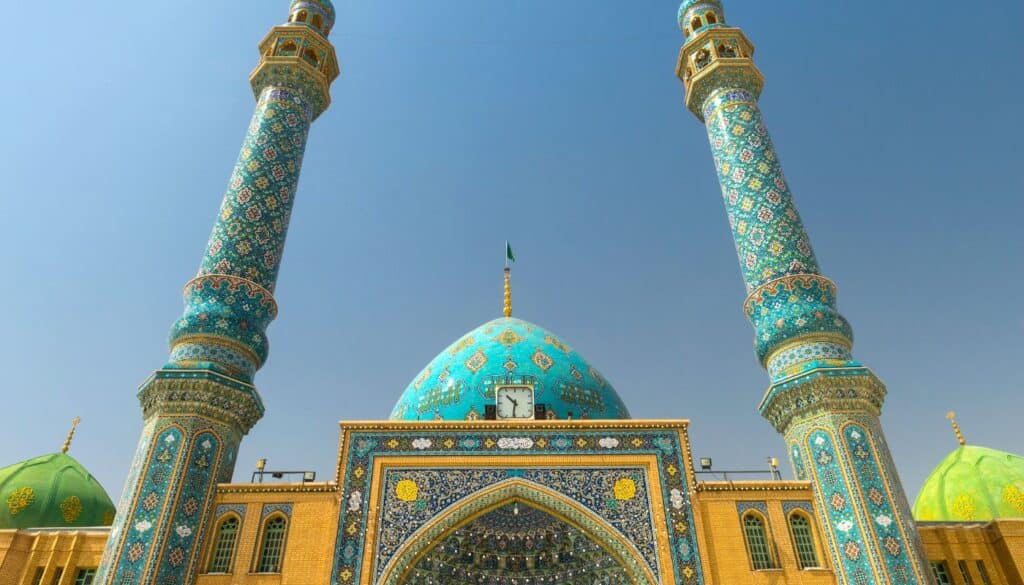
The Imam ordered the man to erect a mosque on the spot where they met. He obeyed, and so the Jamkaran Mosque was built. Pilgrims write their wishes on a piece of paper and drop it down the mosque’s well to have it answered by the 12th Imam.
8. Mount Khezr-e-Nabi
If you want to enjoy a stunning panorama and do not mind some exercise, you should head to Mount Khezr (Khezr-e-Nabi) six kilometers from Qom. On the top, at an altitude of 300 meters you will find a small mosque that has been attracting pilgrims for a long time.
9. Namak Lake (Salt Lake)
100 km east of Qom lies the Salt Lake being a part of the great salt desert. The lake only exists during wintertime and then occupies roundabout 1 km² of the total 1800 km² surface of the desert. In summer, the water entirely evaporates due to the hot climate, and you can walk on the crunch layers of salt.
What to taste in Qom
When in Qom, do not forget to taste the famous sweet, the Sohan. It is a buttery, toffee-like brittle studded with pistachios.
Recommended hotels in Qom (by locals)
Emami(2 star); Address: 24th alley, Bu Ali sina st, Qom
Mahan Hotel (2 stars); Address: Saeedi Square, Ghafari Crossing, towards the Shrine, Qom
Qom International; Address: Qom, Eram St
Sadeghiyeh (3 stars); Address: Arg alley, Bahahr boulevard, Hojatiyeh intersection, Qom
Jamil (3 stars); Address: 4TH alley, Ammar-e yaser 45metri st, Qom
Melal (4 stars); Address: Tohid boulevard, Qom
Book your accommodation through 1stQuest online travel agency. Here you can also buy your flight, train, and bus tickets and sign up for local tours.
Recommended Restaurants in Qom (by locals)
Arg Salarieh; Address: Amin boulevard, Qom
Mortazavi; Address: Valiasr boulevard, Alghadir boulevard, Qom
Khadem; Address: 20th Sadooqi alley, Shahid Sadooqi boulevard, Qom
Qom is more of a pilgrimage site than a tourist hub and even many locals would talk you out visiting Qom, saying it is the place for conservative and religious mullah. It is the center of religious education, Khomeini ayatollah’s first steps towards taking the lead to oust the shah and the symbol of the Islam-based governance of Iran. Still, if you are a curious traveler, visiting Qom and the Fatimah Masoumeh shrine is a unique experience and helps you get a better understanding of Iran.

